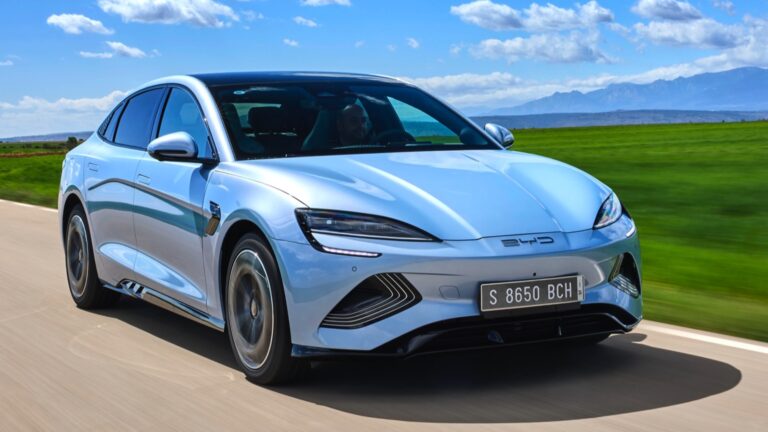A fierce price war is raging in the world’s largest electric vehicle (EV) market, and it’s more than just a battle for sales—it’s a seismic event reshaping the entire global automotive industry. What started in China is now sending shockwaves across Europe and North America, forcing legacy automakers to rethink their strategies and redrawing the map of technological and economic dominance. For anyone interested in the intersection of technology, geopolitics, and finance, this is the story to watch.
The Spark: How BYD Lit the Fuse
The catalyst for this market-altering conflict was an aggressive strategic offensive from BYD, the world’s largest EV manufacturer. Leveraging its immense production scale and a deeply integrated vertical supply chain—producing an estimated 90% of its components in-house—BYD initiated a series of dramatic price cuts designed to consolidate its market share and squeeze out weaker rivals.
The most striking example was the price of its popular Seagull compact EV (sold as the Dolphin Mini in some markets), which was slashed from around $10,000 to under $8,000 in China. This move was followed by discounts of up to 34-35% across more than 20 different models, an action that analysts quickly dubbed the start of a “price war panic”. While BYD’s own executives have admitted the “extreme” competition is unsustainable in the long run, the company has shown no signs of letting up, forcing competitors to follow suit and triggering a race to the bottom.
A Market Primed for a Fire
This price war didn’t happen in a vacuum. It’s the direct result of over a decade of Chinese industrial policy that poured billions into creating a world-leading New Energy Vehicle (NEV) sector. This strategy was wildly successful, but it also created a market with dangerous overcapacity, flooding the landscape with more than 100 EV brands all fighting for the same domestic customers.
The result is what industry insiders are calling a competitive “bloodbath”. Average net profit margins for Chinese automakers have plummeted from a slim 5% in 2023 to just 3.9% in the first quarter of 2025. This unsustainable environment is now forcing an inevitable consolidation, a brutal shakeout designed to forge a handful of battle-hardened national champions from the flames.
Europe is the New Front Line
With the domestic market saturated, Chinese automakers are aggressively targeting Europe as their most profitable export destination. A flood of affordable, technologically advanced EVs is rapidly changing the European automotive landscape.
In what analysts called a “watershed moment,” BYD’s registrations in Europe surpassed Tesla’s for the first time in April 2025, driven by a staggering 359% year-on-year increase in sales. This surge is led by models like the BYD Dolphin Surf, which launched in the UK for around $25,000, creating a new, highly competitive entry-level segment that legacy European automakers are struggling to match.
In a brilliant strategic pivot to circumvent the EU’s tariffs on battery electric vehicles (BEVs), Chinese OEMs are now also flooding the market with plug-in hybrid electric vehicles (PHEVs), which are not subject to the same duties. This has led to a 546% surge in Chinese PHEV sales in Europe as of April 2025.
The Legacy Automakers’ Dilemma
While a 100% tariff has largely insulated the U.S. market from direct imports, American automakers are not immune. Legacy giants like Ford and General Motors, which once relied on China as a major profit center, are now facing steep losses and declining market share there. This erosion of profitability is forcing them to accelerate the development of their own affordable EV platforms to defend their home turf.
The response has been a series of radical strategic shifts:
- Volkswagen is going all-in on its “In China, for China” strategy, localizing R&D and partnering with Chinese tech firms like XPeng to develop a new, low-cost EV platform.
- Ford has assembled a secret “skunkworks” team in California, led by a former Tesla engineer, with the sole mission of developing a hyper-efficient, affordable EV architecture from the ground up.
- General Motors is executing a strategic retreat, cutting funding for its ambitious Cruise robotaxi division and focusing its resources on defending its profitable North American truck and SUV segments.
A Global Automotive Restructuring
The EV price war is far more than a series of discounts. It is a calculated, state-influenced market correction designed to consolidate the Chinese domestic market and launch its national champions onto the global stage. It’s forcing a complete reevaluation of supply chains, corporate strategy, and geopolitical alliances.
The era of comfortable profit margins for legacy automakers is over. The new battlefield is defined by radical cost efficiency, massive scale, and technological supremacy. For the geeks among us, this is a fascinating, real-time case study in industrial strategy and global competition. The automotive world is being remade before our eyes, and the companies that survive will be the ones that adapt the fastest to this brutal new reality.


